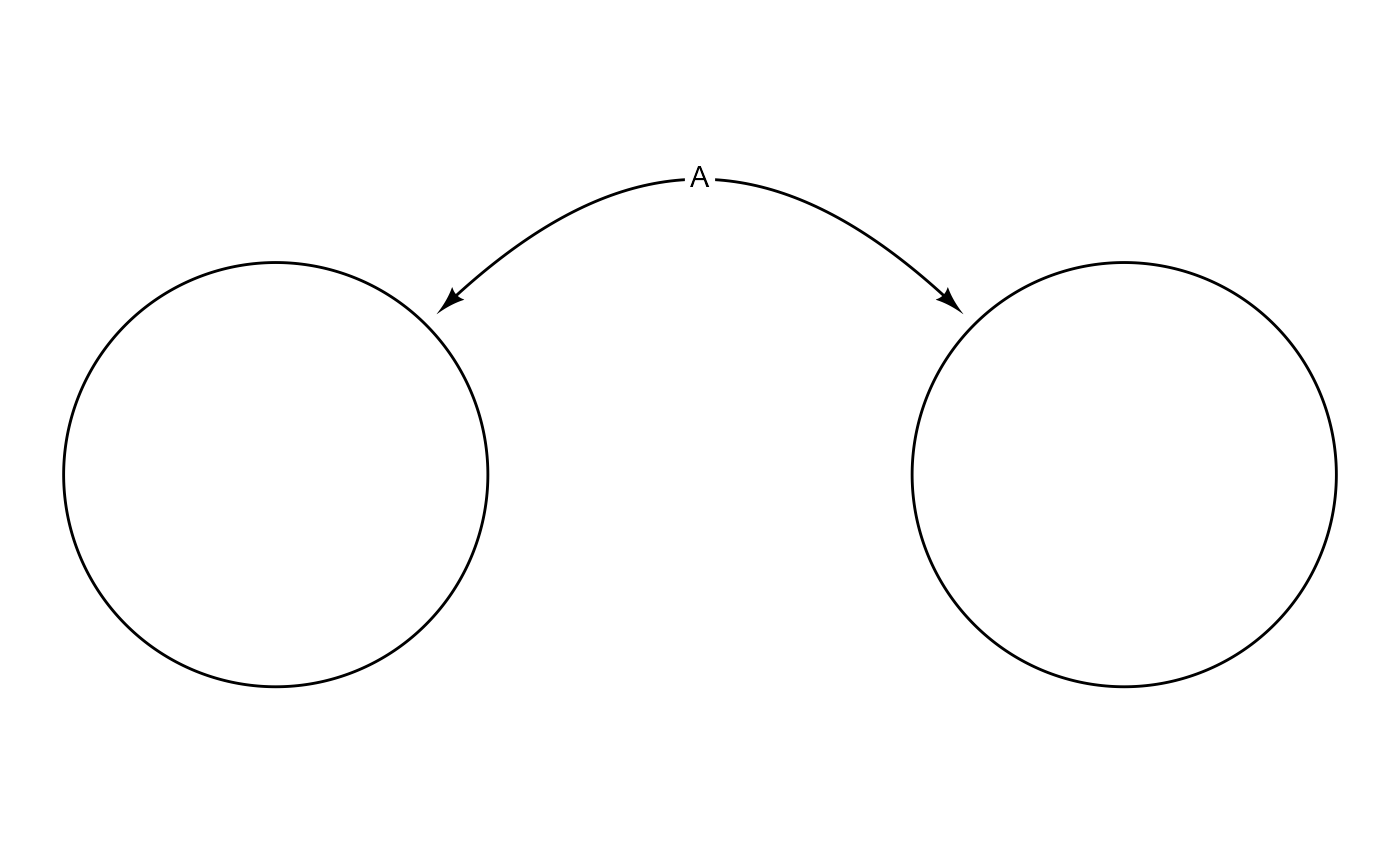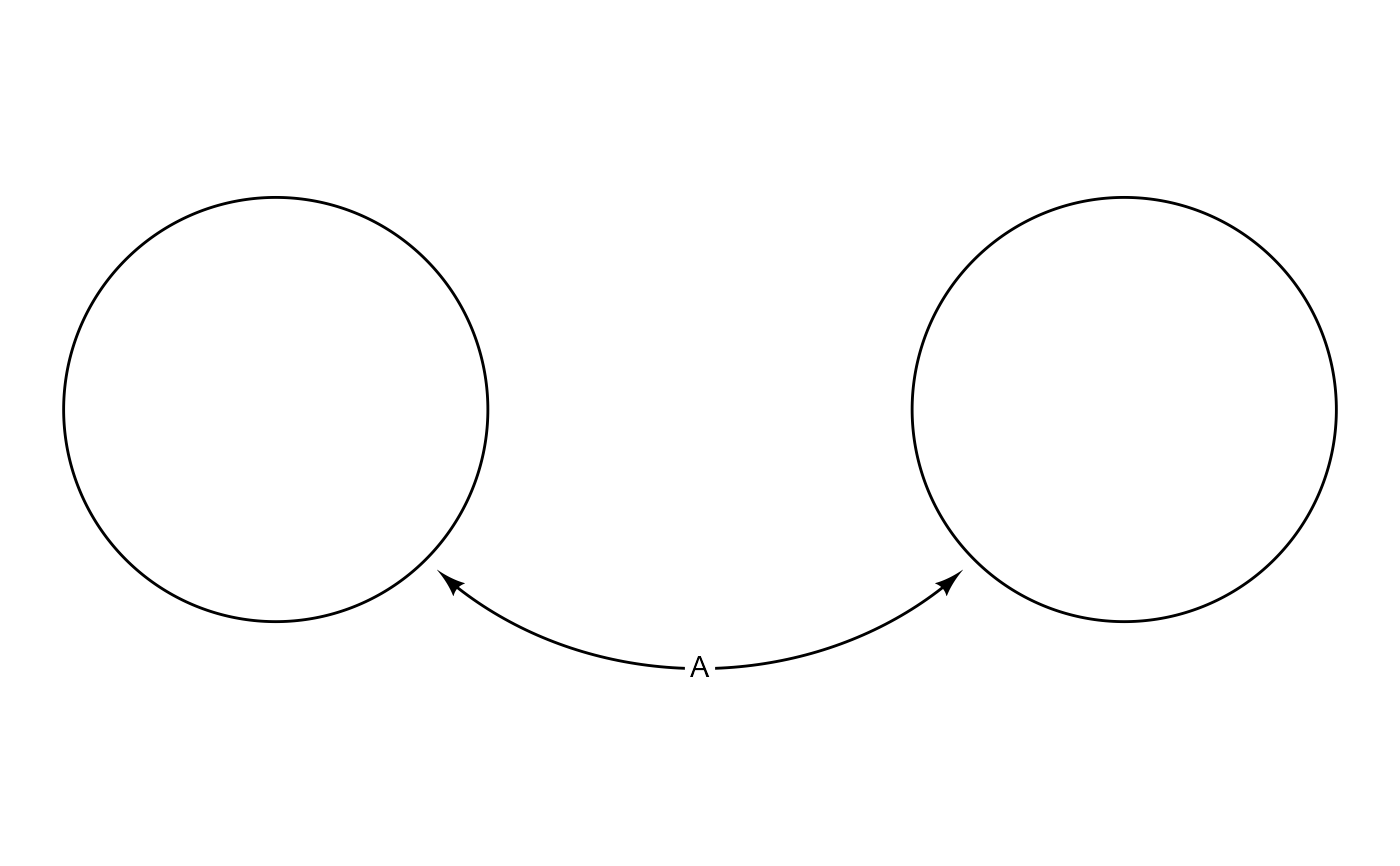
create double-headed arrow paths indicating variance
Source:R/a_early.R, R/ellipses.R
ob_covariance.Rdcreate double-headed arrow paths indicating variance
Usage
ob_covariance(
x,
y,
where = NULL,
bend = 0,
looseness = 1,
arrow_head = the$arrow_head,
length_head = 7,
length_fins = 7,
resect = 2,
...
)Arguments
- x
object
- y
object
- where
exit angle. Can be numeric (degrees), degree, radian, turn, or named direction (e.g., "northwest", "east", "below", "left")
- bend
Angle by which the control points are rotated. Can be numeric (degrees), degree, radian, turn, or named direction (e.g., "northwest", "east", "below", "left"). Defaults to 0
- looseness
distance of control points as a ratio of the distance to the object's center (e.g., in a circle of radius 1, looseness = 1.5 means that that the control points will be 1.5 units from the start and end points.)
- arrow_head
A 2-column matrix of polygon points
- length_head
Determines the size of the arrow head. Numeric values set the ornament size relative to the linewidth. A grid::unit value sets the ornament size in an absolute manner. From ggarrow.
- length_fins
Determines the size of the arrow fins. Numeric values set the ornament size relative to the linewidth. A grid::unit value sets the ornament size in an absolute manner. From ggarrow.
- resect
A numeric(1) denoting millimeters or grid::unit to shorten the arrow head and fins.
- ...
<
dynamic-dots> properties passed to style
Value
An ob_bezier object

